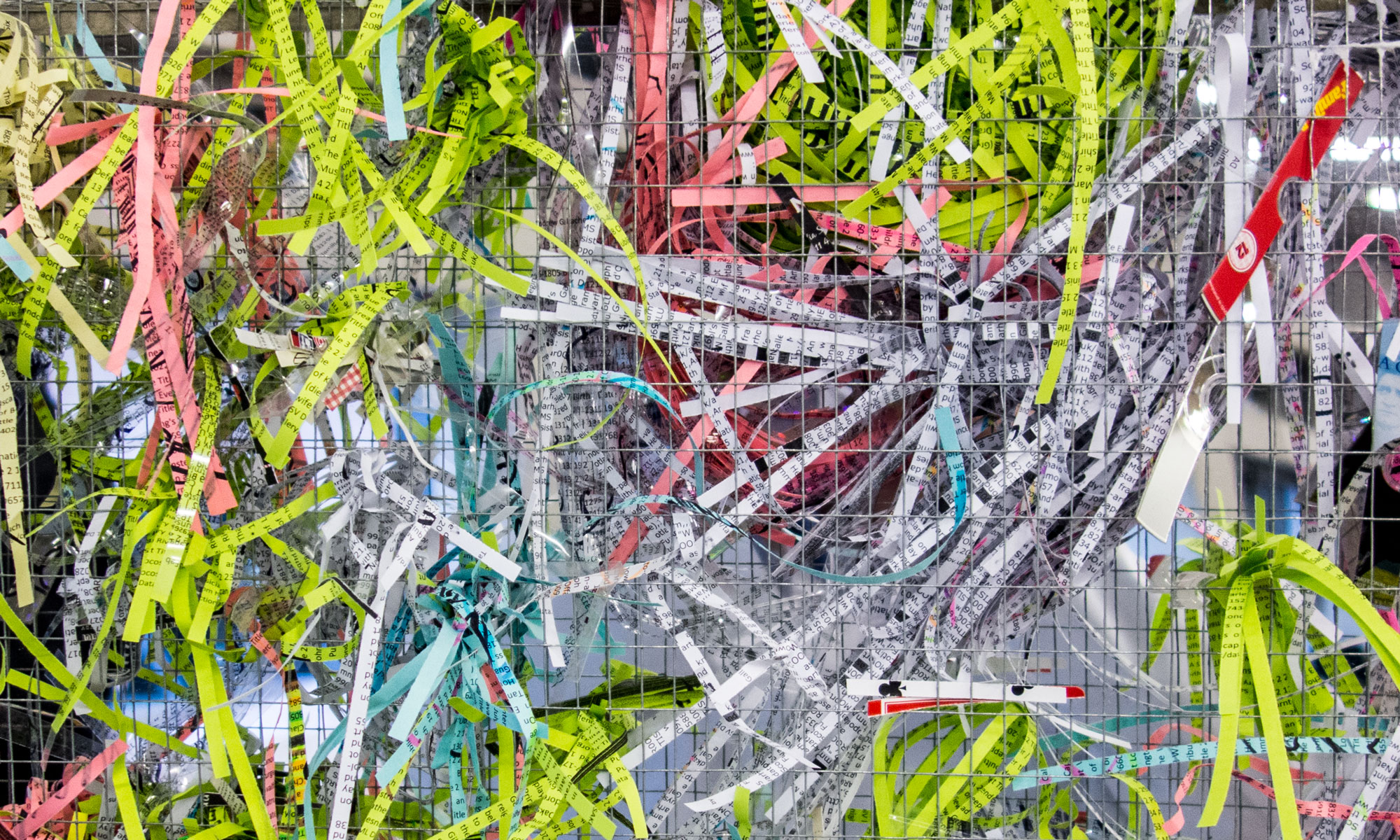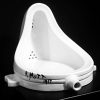I’m Andrew Gallacher, I’m an artist working here at Tate Exchange – 5th floor Blavatnik building. I’m a conceptual artist and that’s why this work interests me so much, because, it is probably the first bit of conceptual art. by conceptual, I suppose I mean that the idea behind the work is the most important thing about it.
This is called FOUNTAIN and it’s by Marcel Duchamp. and, of course, as you can see – it’s a urinal. Is it a beautiful urinal? some people think so – and have said the curves remind them of the veiled face of a woman or the outline of a sitting Buddha figure.
And why is it signed R. Mutt 1917 on the side if it’s by this Marcel DuChamp character?
Well, here’s the story: So it’s New York in 1917, and Marcel Duchamp is quite a well known painter – and he is on the organising committee of The Society of Independent Artists – (another artist on the committee was the famous photographer Man-Ray) and this society says that in their first exhibition they will not judge the art (as to whether it’s good art or bad art) but that any artist who pays the $6 entrance fee can be exhibited. Well, Duchamp pops down to the 1917 New York equivalent of B and Q and buys a porcelain urinal. He paints the signature and date on in black paint and then gets a friend of his to submit it to The Society of Independent Artist’s as a work of art for their exhibition.
Now Duchamp was a little eccentric – and certainly an interesting character – he had a female alter-ego called rRose Selavy – and there are photographs of him in full drag – and some of his art is made as her, as his female alter-ego… anyway…
The committee don’t know that the urinal is from that rascal Duchamp and they decide that it’s offensive and that they aren’t going to show it and to refund the entrance fee of $6 and they send a letter to R.Mutt saying that such an object has no place in an art exhibition.
Duchamp gets the urinal back and he resigns in disgust from the committee and takes it to be photographed by his friend the photographer Alfred Stieglitz – and it’s his photograph that is the only remaining evidence of the urinal’s existence – and it’s thought that Stieglitz threw it out after a while.
Why is it important? why do I like it – So we can’t say that Duchamp was a great crafter of art – I mean he basically went shopping. You can’t say that the object itself is a special thing – it was mass produced in a factory – it is an everyday mass produced object and you can’t say that experiencing the object is intrinsically rewarding… it is not, arguably, aesthetically pleasing.. … at best you look at it and ask questions
The main question being – what the hell is a urinal doing in an art gallery.
And that’s the point… that is the point of this work… what this work does is to ask questions like What Is ART, who can be an artist. Is it a work of art just because it’s in a gallery. is it a work of art because what it represents is the story I’ve just told you? Who decides if it’s art or not? Now to my mind this urinal represents the story, the idea, the concept behind Duchamp’s intention to shock the art establishment into looking at what art can be.
My artwork here in the Blavatnik building basically consists of a rectangular wire cage filled with shredded data… and it too is important because it is a way of telling a story that asks questions – the questions I’m asking is what happens without art? when all we are left with is the data that represents art, and does that matter?
so that’s the connection between my work and this work. my work is about as aesthetically pleasing as a urinal, too!
It’s a fake? A replica? not the real thing.
This is actually a replica, made in 1965, under the guidance of Marcel Duchamp. And signed by him on the back – I think there’s a little copper plate on the back with the details of where and by whom it was made, but… It’s a copy. So there’s another little twist – that this isn’t even the original urinal that Duchamp put in to that 1917 exhibition.
And since (arguably) the whole point of the original was that it was an object from an industrial production line… but this replica is a handmade copy it’s actually fired earthenware made to look like porcelain – so that just adds to the layers of confusion and complication that arise in thinking about it. Is it genuine is it authentic. and what do those words mean, anyway?
There were 17 replicas made in total, all under Duchamp’s guidance … and this is one of eight replicas made in 1965.
Now for some people the proof that this is, indeed, a work of art is that in 1999 another one of the 1964 replicas was sold at Sotheby’s for 1.7 million dollars.
People who have tried to ‘contribute’to the art
Interestingly and this is not an invitation to anyone, quite a few performance artists have tried to ‘contribute’ to the piece by urinating into it, and not because they couldn’t find the loos. Including musician Brian Eno but there is some doubt as to whether he actually urinated into it because what he did was to urinate into a tube and then poured the tube of urine through the little gap in the protective glass this is at the Museum of Modern Art in America in 1993 so there is some argument about whether he actually urinated into the urinal
and in fact here at Tate Modern there were two Chinese performance artists who tried to take a whizz on the Fountain. This was In 2000, Yuan Chai and Jian Jun Xi, went to the newly opened Tate Modern and tried to urinate on the Fountain which was on display. luckily the perspex protection here stopped them – when asked about it they claimed that Duchamp would have approved of their contribution to his work.
And, actually I think they’re right. Duchamp’s intention was surely to outrage the public morals, to stick two fingers up to the art establishment – and in 1917 all you had to do to do that was to suggest that a urinal could be art. Now in the 21st century you’d have to do rather more than that… so I think Duchamp would have approved. On the other hand Duchamp wouldn’t have to clear it up!
Well – Ten minutes isn’t long but I hope you found something interesting – I’m happy to answer any questions, if I can – and I’d like to invite you all to the 5th floor of the Blavatnik building so you can see some more conceptual art.
Thank you for listening – and I hope you enjoy the rest of your day at Tate Modern. Thank you.

